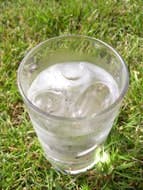Researchers from Columbia University’s Mailman School of Public Health have been studying the health effects of low-dose exposure to arsenic in drinking water for three years, according to the Water Quality Association.
Their report, published June 13, 2006, finds that populations exposed to well water with arsenic concentrations as low as 50 micrograms per liter are at risk for skin lesions. In addition, older, thinner males are more likely to be affected by arsenic exposure, according to the findings.
Researchers evaluated arsenic exposure based on well-water arsenic concentration and usage. “Because of the wide range of arsenic exposure in the study population and the relatively large sample size, we were able to estimate and report dose-response relations even at the very low end of the arsenic exposure range. In particular, arsenic exposure seems to increase the risk of skin lesions at the low end of exposure in this population,” said Habibul Ahsan, MD, MMedSc, associate professor and director of the Center for Genetics in Epidemiology in the Department of Epidemiology at the Mailman School of Public Health and principal investigator.
The researchers indicated that a unique opportunity exists in Bangladesh to study chronic arsenic exposure measured at the individual level, because the majority of the population uses a single well as their primary source of drinking water.
The study also found some evidence that participants with a higher body mass index were at lower risk of skin lesions than participants with a lower body mass index. “Lower body mass index reflects poorer nutritional status in rural Bangladesh, which could directly or indirectly influence the effect of arsenic. In particular, poor nutritional status may be associated with lower intake of the antioxidants, folates, and/or dietary proteins necessary for metabolism and detoxification of arsenic in the body, said Dr. Ahsan.” The influence by gender, age and body mass should be considered in future research and policy decisions.”
Source: WQA


